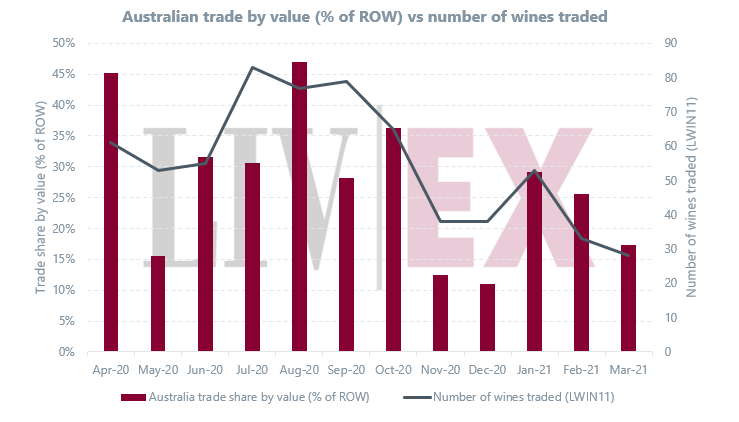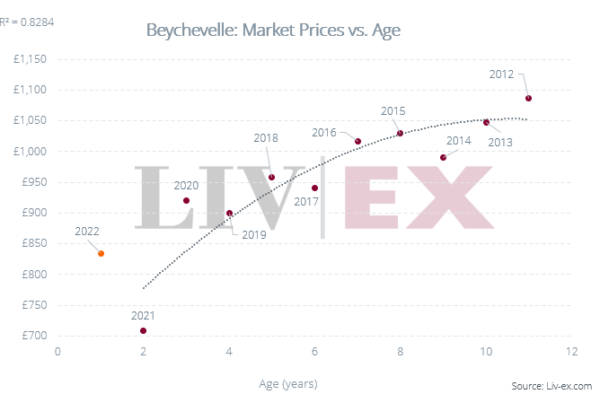Australian wine imports will face import tariffs of up to 218% in China for the next five years. This is the latest shot in a trade dispute between the two countries that has already had a detrimental impact on Australia’s performance in the secondary market.
Last August, China announced an ‘anti-dumping’ investigation into Australian wine. In late November, the Chinese government introduced tariffs of 107% to 212%, with further 6% ‘anti-subsidy’ fees added in December.
These latest tariffs, ranging from 116% to 218%, were formalised in March 2021, and while Australia intends to appeal to the World Trade Organisation, they are set to remain in place for the next five years.
As China is Australia’s biggest wine export market in value terms (nearly 40%), the tariffs have already had a detrimental impact on exports, according to Wine Australia.

Leading the pack
Australia has long been among the biggest drivers behind the expansion of the Rest of the World (RoW) category’s trade share. The Rest of the World (including Australia, Spain, Germany, Chile, South Africa and New Zealand) has been touching record highs, as the fine wine market has broadened beyond the traditional strongholds of Bordeaux and Burgundy. This time last year, RoW took 9% of the total market share by value.
Then, Australia accounted for 45.3% of the RoW’s value trade. As of last month, it accounted for just 17%.
Noticeable declines
Since the tariffs were introduced, Australia’s monthly trade share by value has almost halved and there has been a notable decrease in the number of wines trading, as seen in the chart above. Before the tariffs, the number of distinct Australian wines (LWIN11s) was rising gradually on an annual basis, up 304% between 2015 and 2020.
On a monthly basis, August 2020 marked a record in the number of distinct wines (LWIN11s) changing hands – 83. In March 2021, only 28 Australian wines were traded on Liv-ex. The number of trades initiated by Asian buyers in March is down 80% over the same period, with the value traded down 59%.
Today, Australian secondary market trade is led by its biggest price performer, Penfolds Grange, and specifically its vintages 2010, 2016 and 2008. The 2015 and 2013 vintages of Torbreck’s ‘The Laird’ have also enjoyed some activity. Yet the newly imposed tariffs have significantly narrowed the range of Australian wines that are finding willing buyers.
It’s clear that the Chinese tariffs have had an immediate effect.




